Should you deadhead daffodils? Gardening experts share their advice for longer-lasting blooms
These butter-yellow flowers are one of the first signs of spring, but should you deadhead or leave them be?
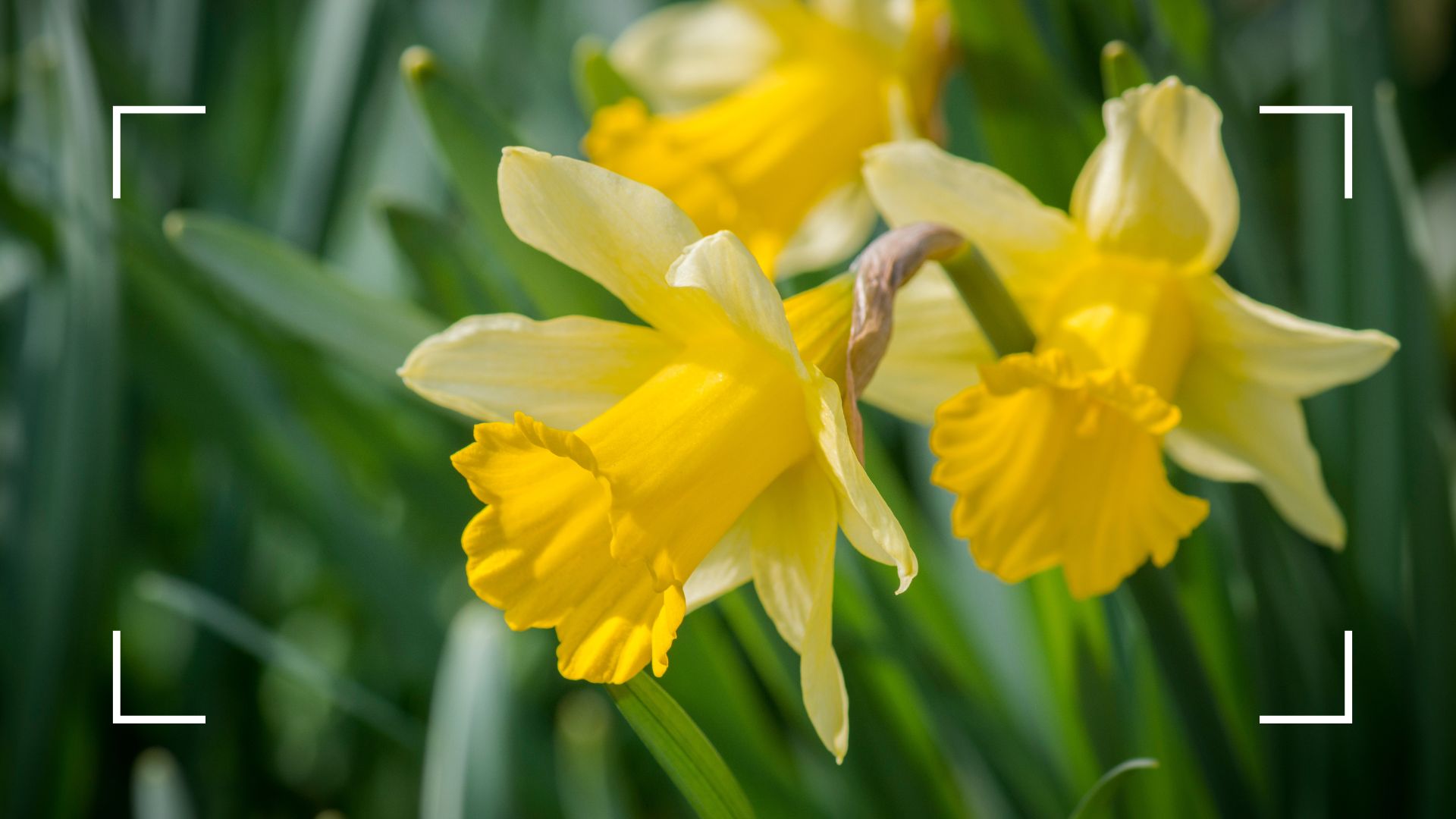

Once the daffodils start popping up, there's no denying that spring has well and truly sprung. But how can you keep these pops of sunshine in your garden for longer, and is deadheading the answer?
If you successfully planted your spring bulbs at the right time, your garden will be filled with glorious patches of sunshine-bright daffodils right now. But if you don't know what to do with daffodils after flowering this enjoyment can be short-lived.
We've consulted our team of gardening experts to get clarity on whether or not you should deadhead daffodils or leave them to wilt away naturally.
Should you deadhead daffodils?
While there are various plant species you should never deadhead, daffodils do not belong on that list and will benefit from a well-timed chop.
"Deadheading is a crucial step in maintaining the health and longevity of a Daffodil," explains expert florist David Denyer from online florist company Eflorist. "The best time to deadhead is after the flowers fade and wilt. This will help the plant redirect its energy back into the bulb, encouraging growth for next spring."
He explains that deadheading can also enhance the overall look of your plant. "Keeping it looking neat and vibrant. Leaving faded blooms in place can diminish the visual appeal of the flower and your home," adds David.

As a celebrated figure in the world of floral design, David has captivated audiences with his stunning floral arrangements and designs for years. He is a two-time Florist of the Year and six-time Chelsea Gold Medalist, whilst also being the in-house plant expert for Eflorist.
This is a similar case to deadheading tulips, only deadhead once the plant is past its best and is ready to start the process of dying back. If you do it earlier, you can risk damaging the plant and its ability to come back next spring.
Sign up for the woman&home newsletter
Sign up to our free daily email for the latest royal and entertainment news, interesting opinion, expert advice on styling and beauty trends, and no-nonsense guides to the health and wellness questions you want answered.
David warns, "You should avoid deadheading daffodils if the blooms are still fresh or only partially faded. Removing them too early can cut short their natural life cycle and prevent growth for next year."
"If you're growing daffodils in wild areas and want natural bulb development, avoid deadheading, as this can prevent the bulbs from multiplying and spreading new growth throughout the area," says David.
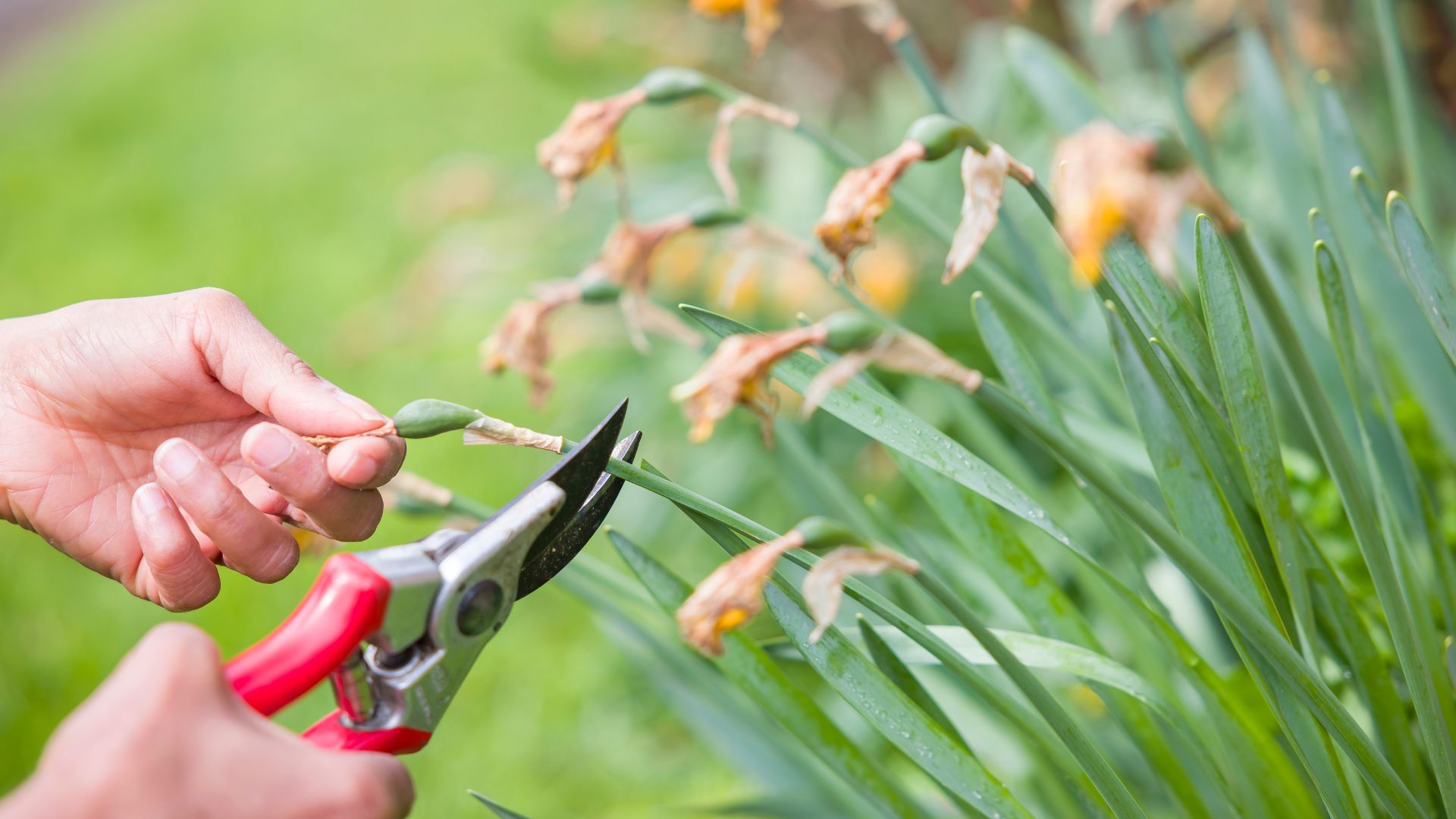
What are the benefits of deadheading daffodils?
Although daffodils are pretty hardy plants, you can plant daffodil bulbs quite late into the year and still have blooms in spring, deadheading is quite important to their health.
"Deadheading daffodils will prevent the plant from producing seedheads, and this ensures that the plant directs its energy back into the bulb to increase the chances of it flowering again the next year," explains Graham Smith MCIHort, horticulture expert from LBS Horticulture.
"If seedheads are left on the plant and allowed to ripen, this can weaken the plant, and it may not grow as much when it flowers again."

Graham has extensive knowledge in the horticultural and gardening industries, and prides himself on using this to help gardeners of all skills create their perfect outdoor space.
FAQs
How to deadhead daffodils
Now that the experts have revealed you should go ahead and deadhead your daffodils, you may be wondering what the best method is. It's time to get your essential gardening tools at the ready.
"You do not need to remove the whole stem of the daffodil at its base," Graham explains. Why? "Because the stem is still used by the plant as it dies back naturally."
"Pinch off the dead flower head and the top inch of the stalk. Leave the rest of the plant in place, as it will continue to photosynthesise and provide energy to the bulb as the plant dies back."
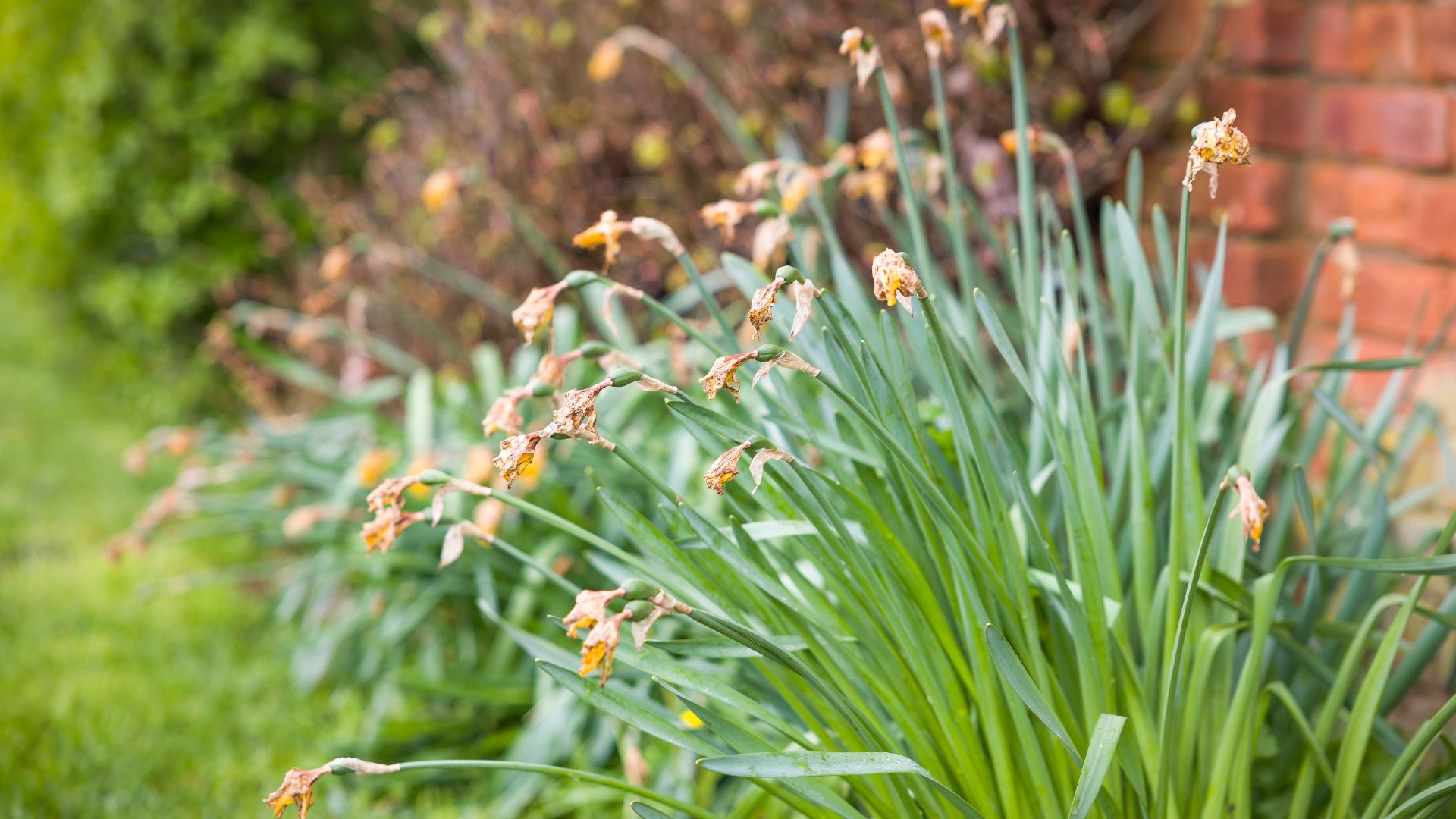
After deadheading the flowers, don't forget to add the offcuts to your homemade compost heap. Then, it's time to give the bulbs some TLC.
"After deadheading, you can provide the daffodils with fertiliser to help the bulb's energy production. You can use a tomato feed every two weeks, or apply a general plant feed after deadheading," recommends Graham.
"Leave the foliage of the daffodils to die back on its own, and this should take roughly six weeks. Only cut back the daffodils once their leaves have turned yellow, as otherwise this will reduce the number of flowers the plant will produce in the following year," he continues.
Shop deadheading essentials

RRP: £9.99 | These gardening gloves have been awarded ‘Amazon’s Choice’, and it’s easy to see why – they’re breathable, comfortable, and stylish.
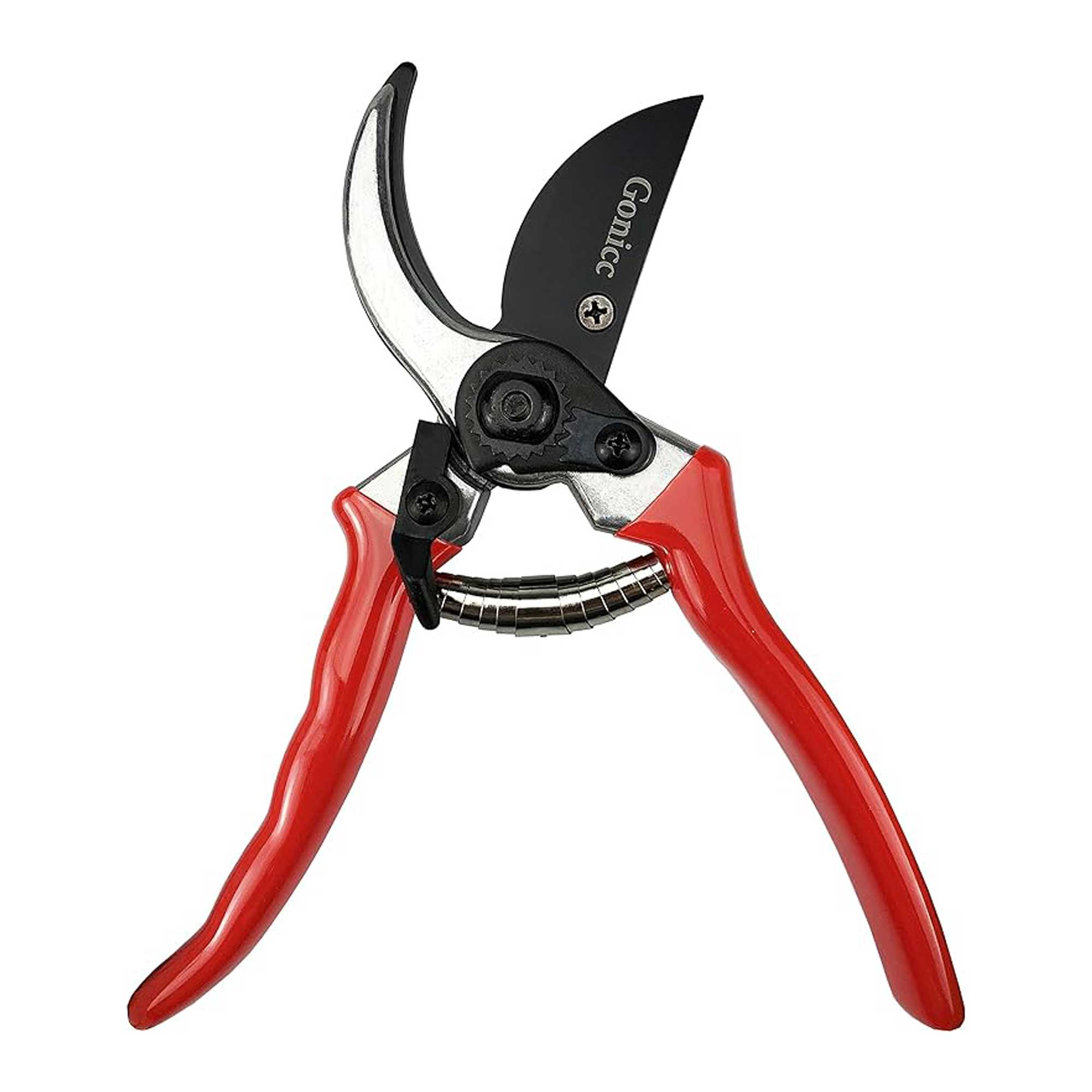
RRP: £13.95 | These popular secateurs have over 8,000 5-star ratings on Amazon. They feature a carbon steel blade and lightweight, non-slip handles, making precise pruning easier.

RRP: £9.50 | Although designed for tomatoes, this tomato food can help provide your daffodil bulbs with the nutrients they need to come back strong next year.
Should you be looking to bring your daffodils inside to be displayed in a vase, you'll want to try this simple sap hack that florists recommend to prolong blooms.

Emily joined woman&home as a staff writer after finishing her MA in Magazine Journalism from City University in 2023. After writing various health and news content, she now specialises in lifestyle, covering unique cleaning hacks, gardening how-tos, and everything to help your houseplants thrive.
-
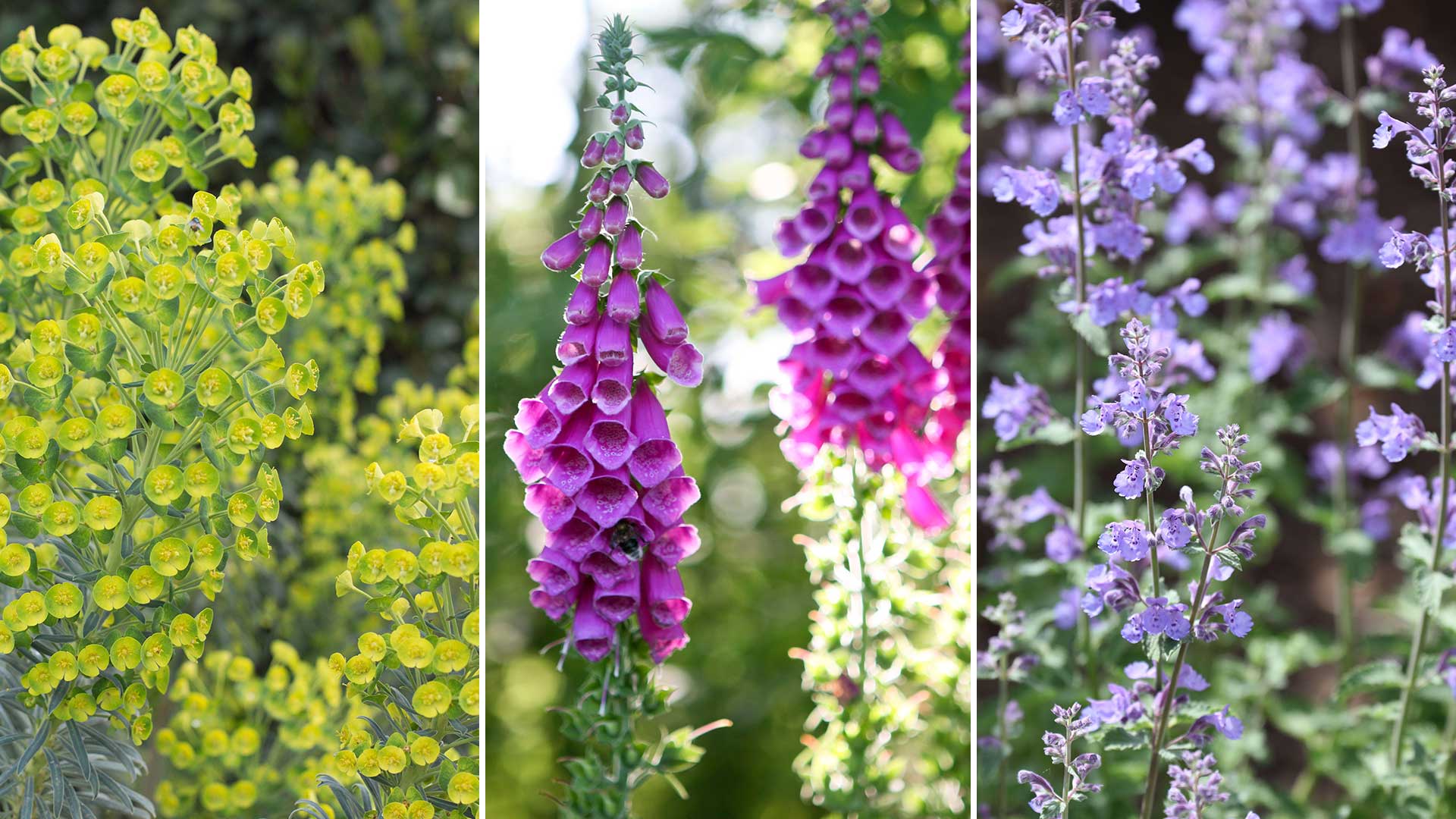 What to plant in April: 8 pretty picks to add to your garden this month
What to plant in April: 8 pretty picks to add to your garden this monthHorticultural experts reveal what to plant in April, including a purple-flowering perennial that's ideal for edging paths and a tall woodland-garden classic
By Holly Crossley Published
-
 Celebrities who overcame scandal and came back stronger than before - from Jane Fonda to Martha Stewart
Celebrities who overcame scandal and came back stronger than before - from Jane Fonda to Martha StewartScandals, controversies and fallouts can really harm a celebrity's reputation, but these stars proved there's power in putting in the work for a second shot
By Jack Slater Published
-
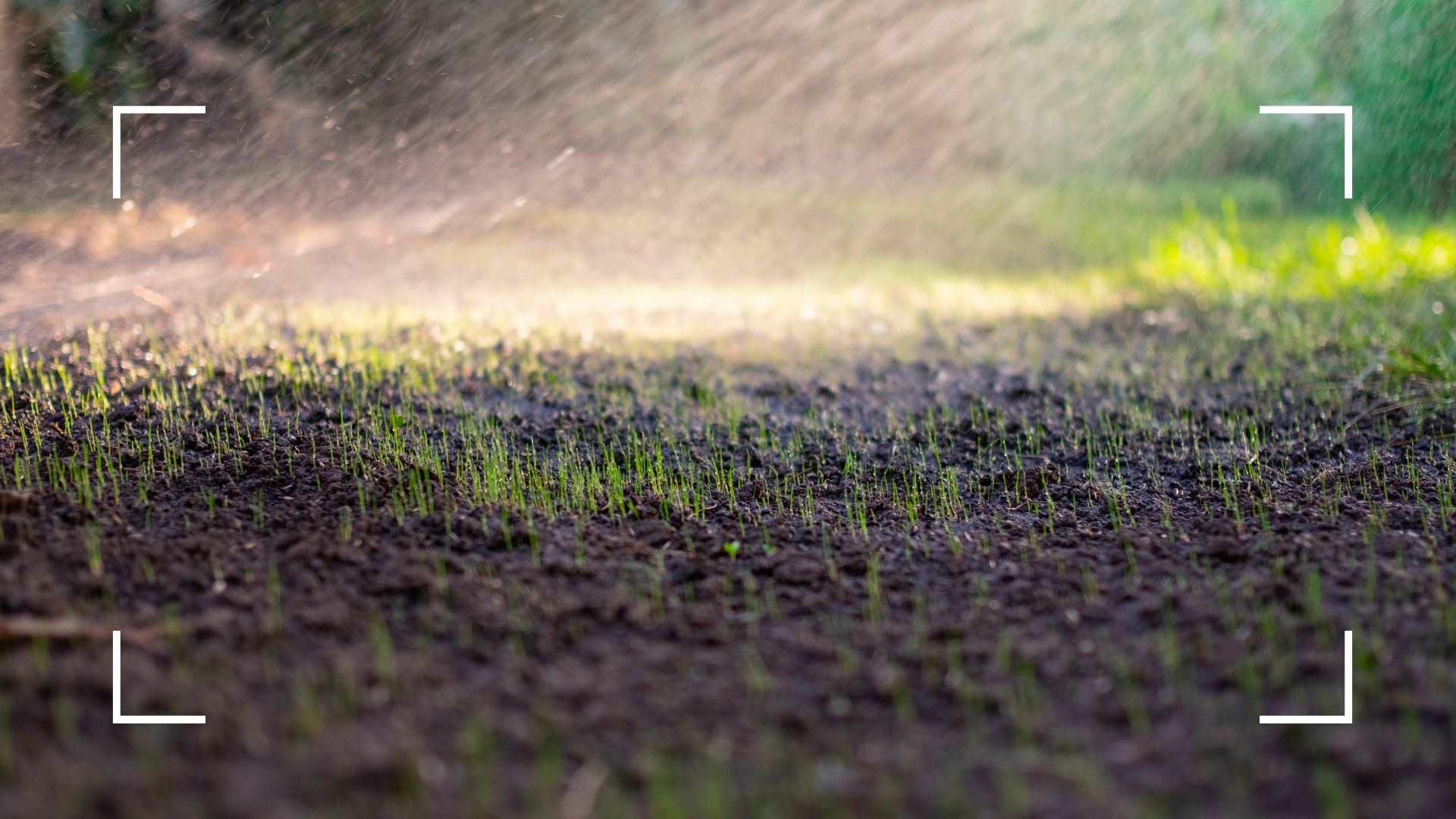 Gardening experts reveal how often you should water grass seed for a luscious lawn this summer
Gardening experts reveal how often you should water grass seed for a luscious lawn this summerWant your lawn to be looking its best by the time summer rolls around? You'll need to make sure you're watering it the perfect amount
By Emily Smith Published
-
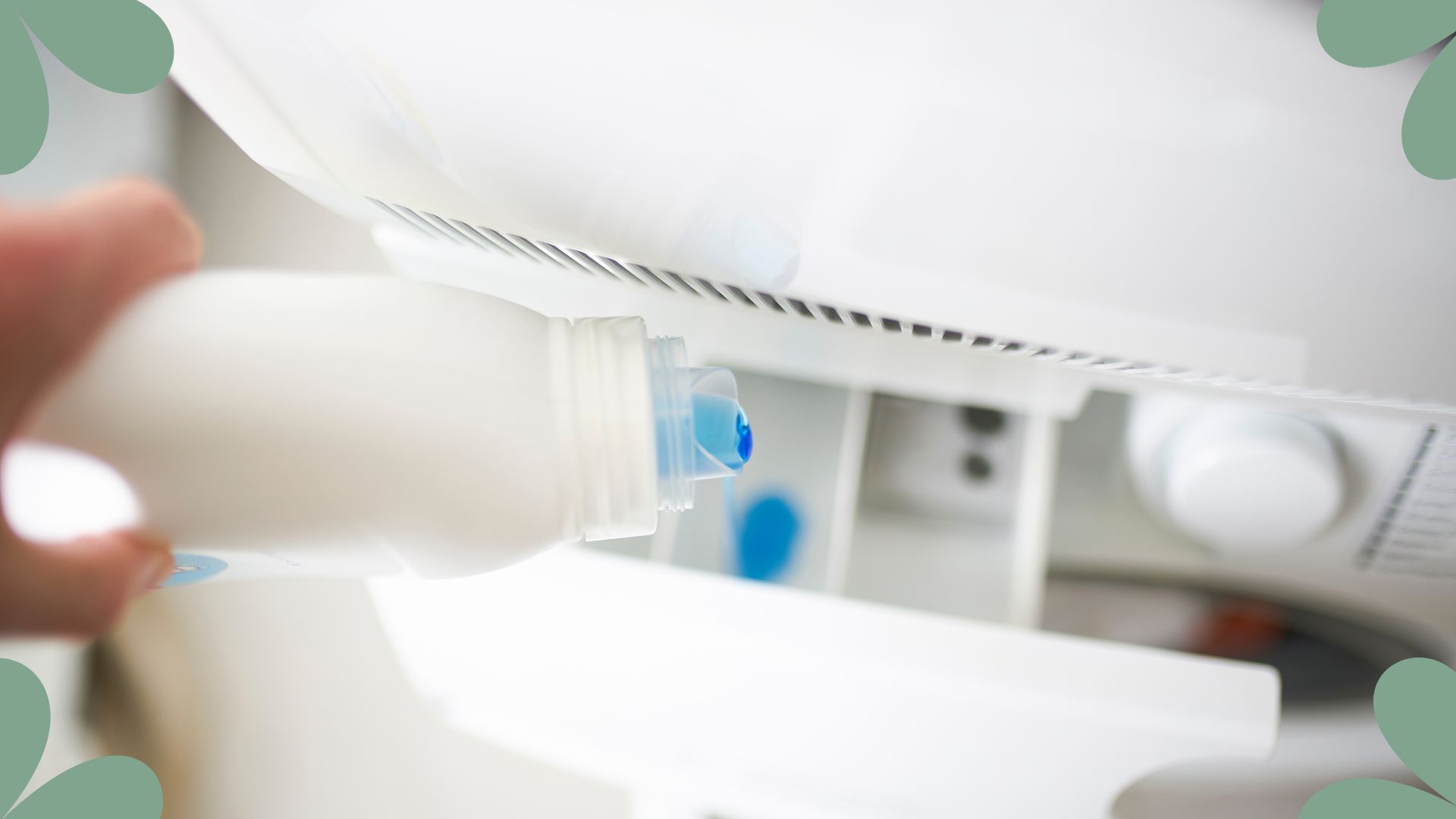 Lynsey Crombie reveals the surprising laundry mistake leaving your clothes smelling 'stale and nasty'
Lynsey Crombie reveals the surprising laundry mistake leaving your clothes smelling 'stale and nasty'Do your clothes smell unpleasant even after you've washed them? It could be your fabric conditioner
By Emily Smith Published
-
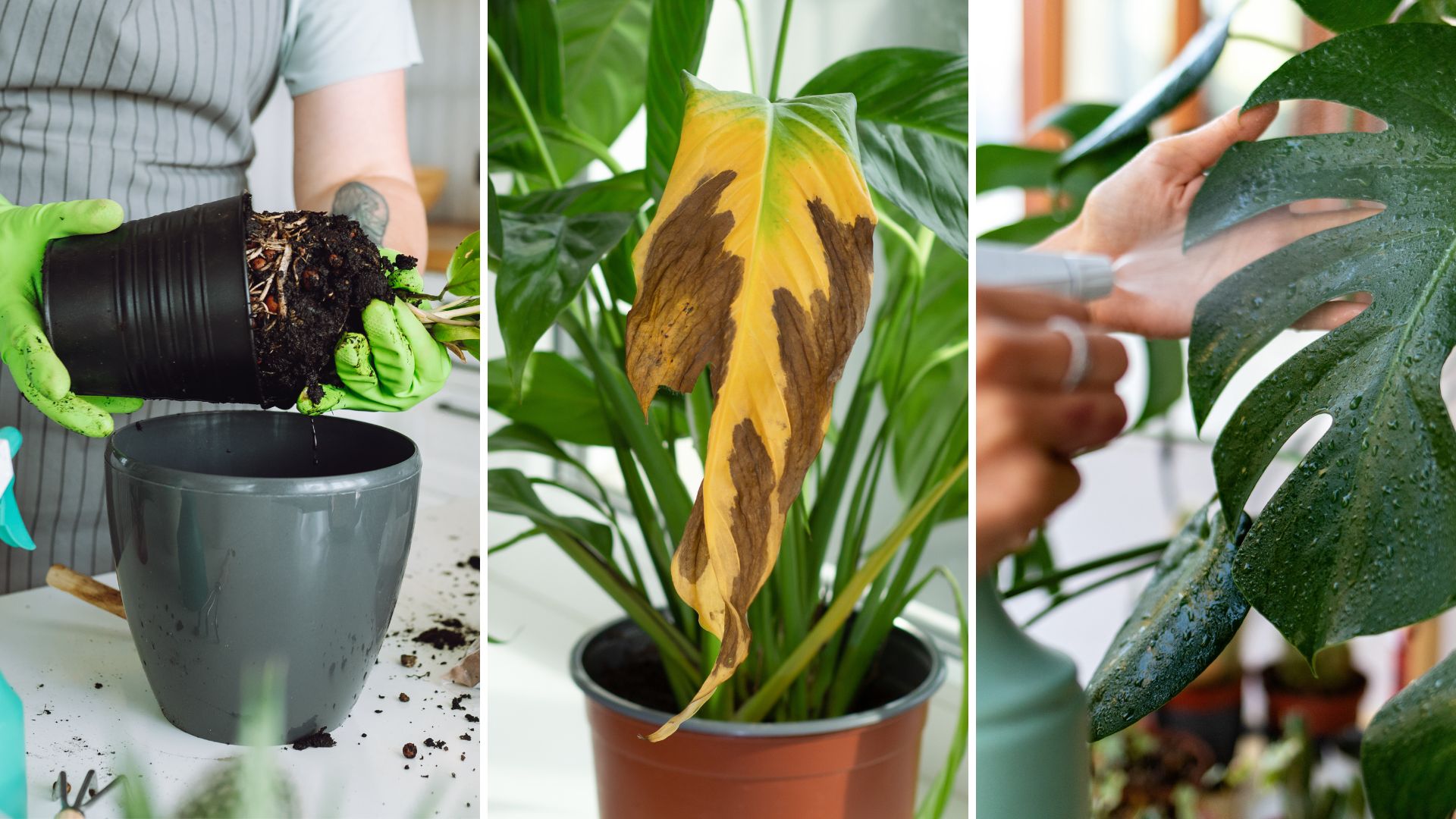 6 common houseplant myths to ignore, warn horticulture experts
6 common houseplant myths to ignore, warn horticulture expertsThese common misconceptions about caring for indoor plants might surprise you – they feel perfectly logical
By Emily Smith Published
-
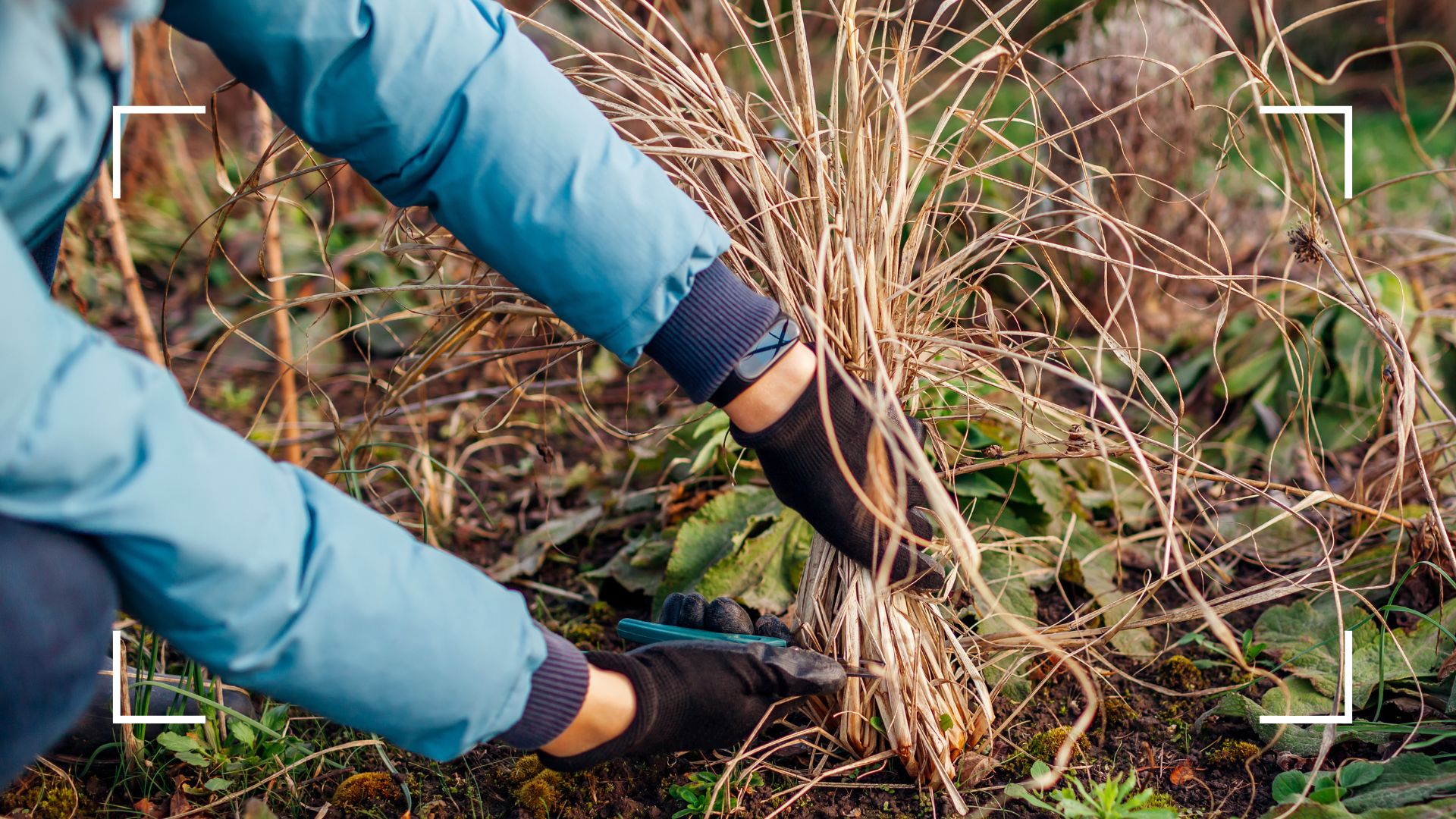 It's time to cut back ornamental grasses, and the expert team at Sarah Raven are here to help
It's time to cut back ornamental grasses, and the expert team at Sarah Raven are here to helpWith spring well and truly here, the team share their top tips to get ornamental grasses ready for new growth
By Emily Smith Published
-
 Monty Don's 'genius' planting trick gives outdoor plants the best chance of thriving
Monty Don's 'genius' planting trick gives outdoor plants the best chance of thrivingThis mess-free trick will make planting seamless - and give your plant a great headstart
By Emily Smith Published
-
 Aldi's on-trend pistachio green air fryer is just £29.99 – stylish and affordable, I had to get one
Aldi's on-trend pistachio green air fryer is just £29.99 – stylish and affordable, I had to get oneColourful, compact and cheaper than comparative models – all the ingredients that made this Aldi Specialbuy hard to resist
By Tamara Kelly Published
-
 5 simple changes you can make to lower your home insurance premium, reveals an indemnity expert
5 simple changes you can make to lower your home insurance premium, reveals an indemnity expertWhether you're looking to cut costs or improve security, these savvy tricks can help with both
By Emily Smith Published
-
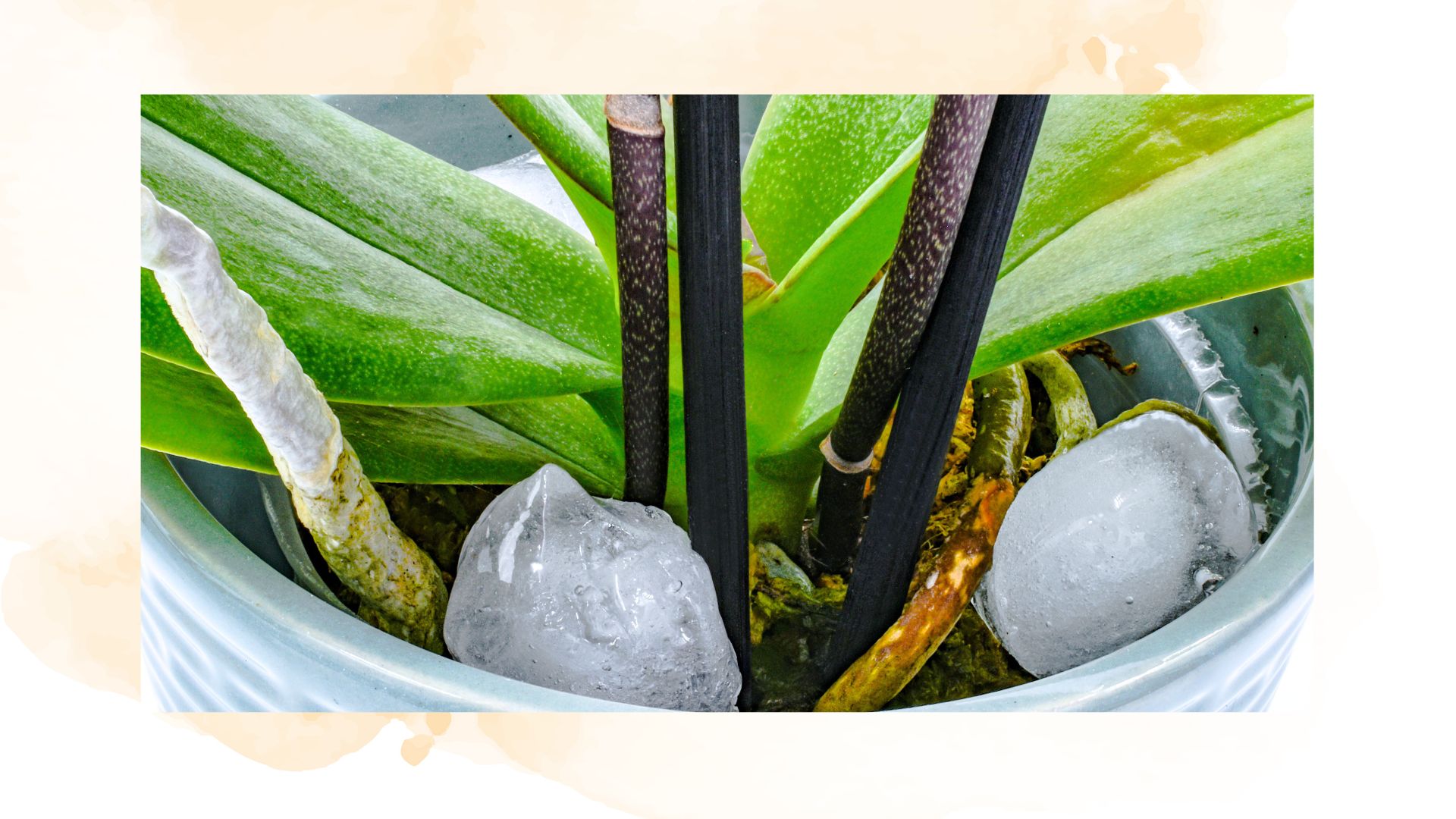 Is the controversial orchid ice cube watering trick genius or problematic? Plant experts settle the debate
Is the controversial orchid ice cube watering trick genius or problematic? Plant experts settle the debateWill this hack benefit your vulnerable orchid or be the reason for its demise? Houseplant experts have revealed the answer
By Emily Smith Published